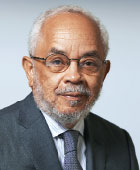Diversity and Curiosity About the Other

Colleagues have been shepherding me through readings and discussions of psychoanalytic literature. The enterprise has been enjoyable, as the reading topics have been about race and psychoanalysis. We recently reviewed Anton Hart’s “Principles for Teaching Issues of Diversity in a Psychoanalytic Context” (Contemporary Psychoanalysis 56:404-417, 2020). He is a training and supervising analyst on the faculty of the William Alanson White Institute.
In the article, Hart presents “an annotated collection of principles for teaching the subject of diversity from a psychoanalytic perspective.” He is aware, however, that his ideas are applicable to other pedagogical contexts. That is why I recommend the piece for reading outside of psychoanalytic circles. He makes clear in a footnote that while he intends to focus on the diversity category of race, his principles are useful in discussions of age, gender, socioeconomic status, and other arenas of difference. Hart’s theorizing about methods of teaching diversity is timely, in light of all the commentary these days about the need for diversity in organizations and systems. Furthermore, conquering fears of those others, the people we do not really know, has become an urgent national preoccupation.
Hart describes 12 principles he “collected over time,” which he views as “ideas rather than mandates” and that he wants readers to approach “dialogically and with interpretive fluidity.” By the latter, he means that teachers should be simultaneously open to being learners and learners should also teach. He emphasizes the importance of experience and process in an interactive method of inquiry about otherness. Fundamental to his novel pedagogical argument about diversity is the “cultivation of curiosity.” This curiosity fuels openness in our conversations with and about those who are different from us. Hart argues that there is bidirectionality in the process of curiosity. Thus, when we ask about others, it is expected that they may want to know about us.
Hart is not a fan of the traditional method of approaching diversity. This popular pedagogical approach provides knowledge that leads to what is commonly termed competency and literacy. For example, it may teach about geography and culture. However, Hart wants more than this emphasis on content. In the absence of earnest curiosity, we are left with avoidance of the required openness that facilitates meaningful engagement with people. Thus, studying otherness in the classroom may provide knowledge, but it cannot replace the experience and process of cultivating human interaction.
Hart recognizes that certain threats accompany curiosity about the other. He describes the possibility of having one’s sense of self disturbed through this curiosity. He thinks this may be linked to the possibility that what we learn about ourselves and others, as we inquire, may at times be at odds with what we had imagined. He suggests, too, that being the object of curiosity may cause us to feel “objectified and implicitly owned” by those posing the questions. The experience may remind us of sensations related to control and dominance.
So, as teachers pose their questions, students may well ask who wants to know and why. We should assume that in these exercises, both teachers and students have the capacity to be malicious. The clinician in Hart recommends that teachers “be careful and reflective” when they invite students to represent their diversity openly. This is important when the students’ otherness “is entangled with subjugation.” Hart concludes with the advice that anyone setting out to teach about diversity should “adopt a stance characterized by self-reflective, radical openness, humility, and fallibility.”
Anton Hart’s contribution to the literature on diversity is important. The insights are couched in a psychoanalytic vocabulary that at first may cause readers to proceed hesitantly. Nonetheless, concentration on the practical dimensions of Hart’s theorizing puts his principles in clearer perspective. Certainly, his contrast between cultivating curiosity about the other and the retention of a model focused on knowledge and content eventually takes clearer form. From my vantage point, being curious reinforces recognition of the other’s inherent and inviolable dignity. Hart effectively connects the experience of curiosity to his notions of “listening with openness and speaking with thoughtfulness.” ■



